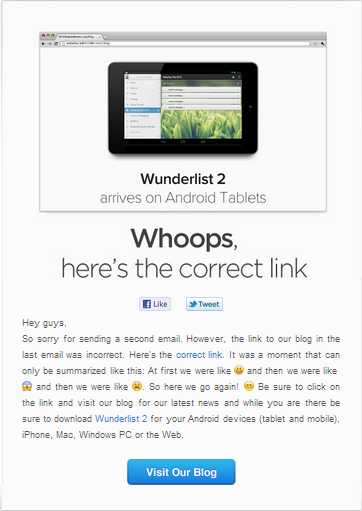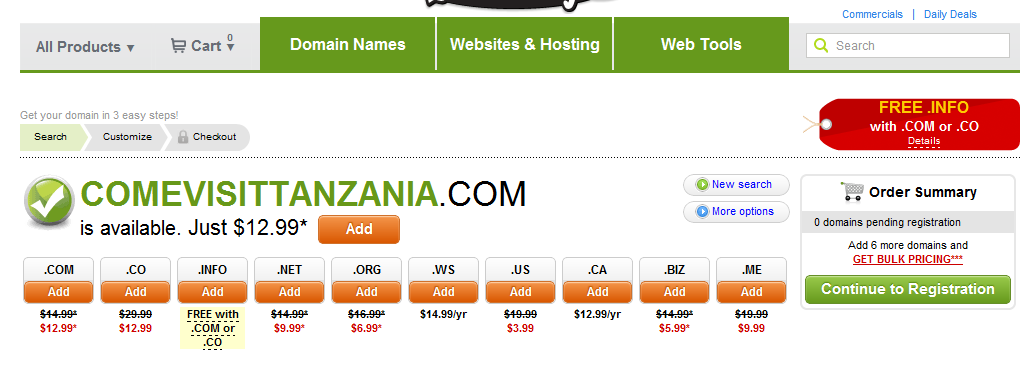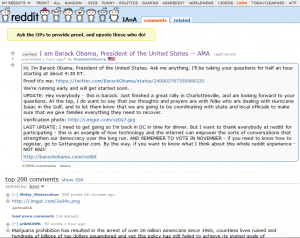I took an afternoon this week to check out Startup Riot at the Sodo Showbox. This was the second year the event was held in Seattle, and I’ll say both years I’ve had a great experience. The event has some unique touches; sprinkled between the 30 3-minute pitches, are 2 keynotes, several networking opportunities, and a long lunch in which you can walk around and meet new people.
Rather than just recap the whole event, I took some notes on what start-up marketers could learn from some of the 30 presenters, both when pitching to customers, or investors. Note, the majority of this post is also up at www.relaborate.com/blog.
—————-
It’s gutsy to take the plunge into the entrepreneurial waters. It’s even scarier to get up in front of 250 people, explain your entire company in 4 slides and 3 minutes, and take 3 more minutes of grilling from some judges.
But that’s what 30 brave entrepreneurs did Wednesday at Startup Riot in Seattle. To reward their courage, Startup Riot judge and keynote speaker Andrew Hyde asked everyone in the audience to blog about at least one of the companies. Blogging – well that’s something we can do. So here are a few things we learned about marketing your company, from both the judges and the start-up CEO’s who took the stage.
1) Show your excitement in everything you do: More than once, the judges asked the entrepreneur, “Are you excited about this project? If yes, then show us. Prove to us with your passion that this project will work.” This means in every powerpoint, blog post and meeting you attend, make sure that your excitement for your idea is contagious.
 2) What is your 5 second 1-liner? Can you explain what you do in 5 seconds? Cindy Wu described her company, Microryza, as “Kickstarter for Science.” That’s easier to remember than, “We built a platform where people can fund scientific research, in an online market and where scientists can go and present their projects to try to receive funding.” Can you describe what you do in 5 seconds?
2) What is your 5 second 1-liner? Can you explain what you do in 5 seconds? Cindy Wu described her company, Microryza, as “Kickstarter for Science.” That’s easier to remember than, “We built a platform where people can fund scientific research, in an online market and where scientists can go and present their projects to try to receive funding.” Can you describe what you do in 5 seconds?
3) Prove you are the team to do it: Parend Paresh may be tackling an unsexy problem with VendScreen. But, it is so obvious that they know what they’re talking about, I would invest in a heartbeat. VendScreen is a touchpad that will be attached to vending machines and enable customers to pay for sodas or snacks by phone or credit card. Neat idea maybe, but why will it work? Well Parend explains his domain expertise, illustrates his partners’ domain expertise, and then tells a fact that all vending machines are going to be required by Federal law to put nutritional information somewhere on the outside of the machine. The fact that he knows this obscure legislation demonstrates that he knows the market for vending technology, and knows how to capitalize on emerging trends.
4) Talk about your wins: iHearNetwork, led by Paul Simonds, is a startup with 3000 users. Not only that, they have a 125 Daily Active Users and 250 Weekly Active Users. Taskk, has 7000 users already in a totally different market, adding 2000 in the last month. When you are a startup, find a number that you can trumpet. I don’t know if 3000 or 7000 users is a lot for the spaces these companies are in, but I wrote the numbers down. They sure sound good. And as one judge said to Placeling’s CEO, “If you aren’t bragging, you sound small.”
5) Show your product: Personify makes it easy for people to find social good opportunities and volunteer events. They already have 500 users. And yet through their presentation, they never showed us the product – which is actually quite lovely. People want to see that the product is live and working. Don’t make them imagine what it will be like. It’s too much work. Show your product everywhere you can. Your product is your story.
6) Explain the problem: Tim Hermanson of Arch started his presentation with a shot of a traffic jam. He asked that since we all have these digital devices in our pockets, why couldn’t anyone, anytime, see something that was happening in a different location so that we could avoid these traffic jams. If I was stuck in that traffic jam, why couldn’t I anonymously upload a photo from my location so others could see my pain and take another route? With the problem framed in a simple scenario, I can now understand the solution. The product becomes real when there’s something I can identify with.
7) Understand your competitors: Shawn Burke of Crowd Picsell wasn’t just asked to name some competitors, judges wanted to understand what he did better then them. If you are a customer, you want to know exactly what the benefits are of one company over the other. Don’t make the customer guess. Be the best at something, and explain exactly what it is that makes you the best over all others. It’s hard to lose when you are the best.
8) Tell a good, humanizing story: Jon Poland created Crowdegy, joining an already crowded survey space. But, he explained why his product would succeed by telling a story about his 5 year old. In his story, he shows his 5 year old how to use his product, and then the next day his 5 year old asks, “Daddy, can I play the dot game again today?” Jon got the point across: His product brings visualization to surveys, is fun enough to do over and over, and is so easy a 5 year old can do it.
There were a number of other startups to keep an eye on. Check out the whole list at StartupRiot.com. And if you were there, did you see any companies that stood out?
![]()






